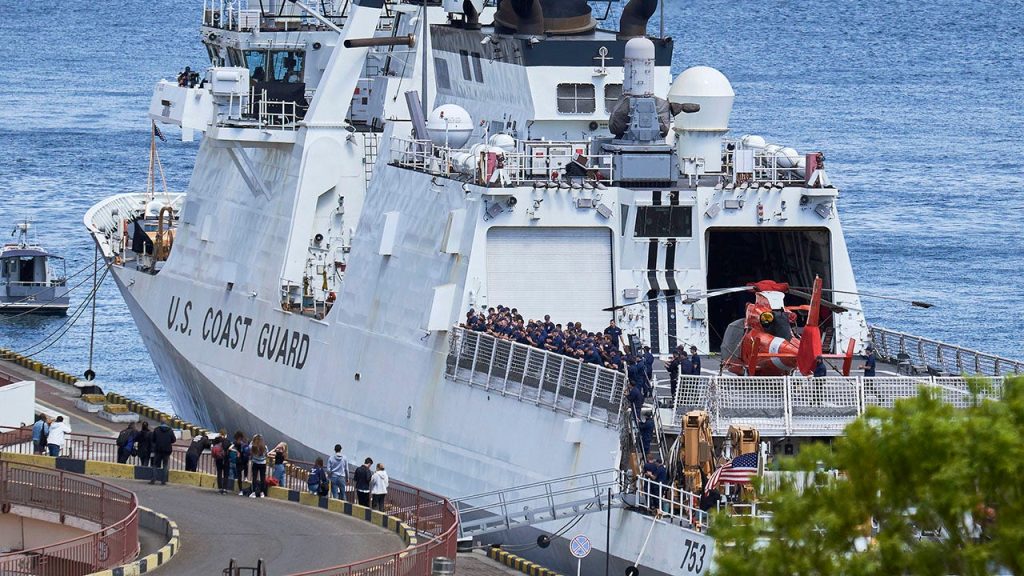Historic Drug Seizure Marks Milestone in U.S. Fight Against Narcotics Trafficking
In what stands as the largest single drug seizure operation in U.S. Coast Guard history, officials recently offloaded an astonishing 76,140 pounds of illegal narcotics at Port Everglades, Florida. The massive haul, which included 61,740 pounds of cocaine and 14,400 pounds of marijuana valued at approximately $473 million, represents a significant victory in the ongoing battle against transnational drug trafficking. Coast Guard officials emphasized the lethal potential of this seizure, noting that the cocaine alone contained enough doses to potentially kill 23 million people—roughly equivalent to the entire population of Florida. This landmark operation underscores both the scale of the narcotics threat facing America and the effectiveness of coordinated maritime interdiction efforts.
Operation Pacific Viper, the initiative behind this historic seizure, forms part of a broader strategy to disrupt cartel activities throughout Latin America and intercept drugs before they reach American shores. The operation has been remarkably successful, with Coast Guard forces conducting 19 separate interdictions across international waters in the Eastern Pacific Ocean and Caribbean Sea. The multi-agency effort brought together resources from the U.S. Navy, U.S. Customs and Border Protection’s Air and Marine Operations, and even included support from the Royal Netherlands Navy. This collaborative approach has proven highly effective in targeting trafficking networks that operate across international boundaries and exploit maritime routes to transport their illegal cargo toward the United States.
The Coast Guard Cutter Hamilton played a central role in these interdiction efforts, with its crew demonstrating exceptional skill and dedication throughout the operation. Captain John McWhite, commanding officer of the Hamilton, praised his team’s unprecedented achievement, highlighting their successful interdiction of 11 go-fast vessels, detention of 34 suspected drug traffickers, and seizure of 47,000 pounds of cocaine—a record in itself. The Hamilton’s exploits included a June 26 operation near the Galápagos Islands, Ecuador, where they seized more than 8,800 pounds of cocaine, and a July 23 interdiction near Socorro Island, Mexico, yielding over 9,160 pounds of cocaine. These successful missions exemplify the Coast Guard’s crucial role in maritime security and drug interdiction operations.
Rear Admiral Adam Chamie contextualized the significance of this seizure by emphasizing the public health implications, stating that the potential 23 million lethal doses of cocaine “underscor[e] the immense threat posed by transnational drug trafficking to our nation.” This comment highlights an important but often overlooked aspect of maritime drug interdiction—its direct impact on preventing overdose deaths and reducing drug availability in American communities. The Coast Guard noted that 80% of illegal drug interdictions occur on the high seas, reinforcing the strategic importance of maritime operations in disrupting the supply chain long before narcotics can reach streets and communities across America. By intercepting these shipments at sea, authorities can have a significant impact on drug availability, pricing, and ultimately, consumption rates.
The scale of this operation reveals the sophisticated and industrial-sized nature of modern drug trafficking organizations. The cartels’ ability to produce, transport, and distribute narcotics in such massive quantities demonstrates both their immense resources and the economic incentives driving the illegal drug trade. Smugglers continue to adapt their methods, using fast boats, semi-submersible vessels, and other techniques to evade detection. This ongoing evolution creates significant challenges for law enforcement agencies, requiring continuous adaptation of interdiction strategies and technologies. Operation Pacific Viper represents a significant advancement in these counter-narcotics efforts, applying coordinated intelligence, surveillance, and interdiction capabilities to identify and target trafficking vessels before they can reach their destinations.
While this record-breaking seizure marks a significant victory, it also serves as a sobering reminder of the persistent and evolving nature of the drug trafficking threat. The international nature of these criminal enterprises necessitates continued cooperation between the United States and partner nations throughout the hemisphere. As Captain McWhite acknowledged in his statement, these successes come at a personal cost to service members and their families, who sacrifice time together while deployed on these critical missions. Their commitment reflects the seriousness with which American authorities view the threat posed by drug trafficking organizations. As these efforts continue, the intelligence gathered from these operations will likely inform future interdiction strategies, helping authorities better understand trafficking routes, methods, and organizational structures—ultimately strengthening America’s hand in the ongoing fight against international drug trafficking networks that threaten communities across the nation.











